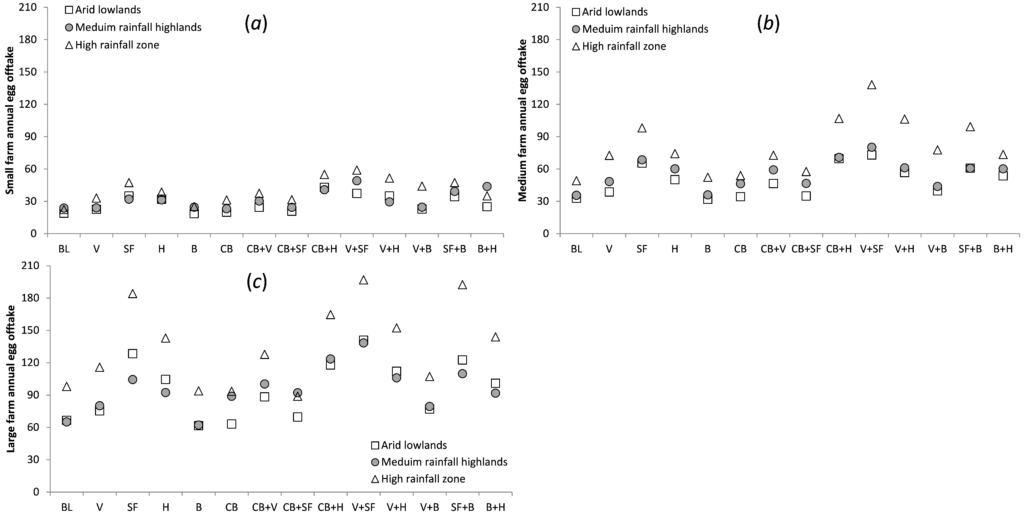Increasing poultry productivity in Ethiopia
Dual interventions can increase poultry productivity
The smallholder poultry sector in Ethiopia could potentially supply a significant amount of meat and eggs, especially if interventions are applied to improve productivity. In contrast, the strength and the accelerated growth of the industrial poultry sector in India is likely to dominate poultry production in the next 20 years. Nevertheless, localised livelihoods benefits from improved extensive poultry production are likely to continue to be important in places.
In Ethiopia the largest increases in regional egg offtake rates were from the dual interventions of a) vaccination and supplementary feeding and b) cross-breeding and improvements to housing (see figure).
Annual egg offtake number for a small sized farm (a), medium sized farm (b), and large sized farm (c). For the baseline (BL), and interventions of vaccination (V), supplementary feeding (SF), daytime housing (H), control of broodiness (B), crossbreeding (CB), and dual interventions of crossbreeding + vaccination (CB+V), crossbreeding + supplementary feeding (CB+SF), crossbreeding + housing (CB+H) vaccination + supplementary feeding (V+SF), vaccination + daytime housing (V+H), vaccination + broodiness (V+B), supplementary feeding + broodiness (SF+B), and broodiness + housing (B+H) for each region in Ethiopia.
The dual intervention of vaccination and supplementary feeding consistently returned the greatest percentage increase in net profits above the baseline value for each of the different sized farms. However, the cost of providing supplementary feed can be highly variable, dependent on many localized issues. The dual intervention of cross-breeding and improvements to housing frequently provided the greatest increases in total bird offtake rates, however the percentage increase in net profit was relatively much lower, due to the cost associated with providing daytime housing.
Market incentives and value chain development will be essential to ensure farmers can intensify their production.

